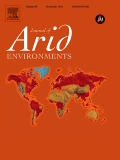
Journal of Arid Environments
Scope & Guideline
Illuminating the Secrets of Arid Landscapes
Introduction
Aims and Scopes
- Ecological Dynamics in Arid Regions:
The journal emphasizes research on the interactions between species and their environments in arid ecosystems, exploring how these dynamics influence biodiversity, community structure, and ecological processes. - Climate Change Impacts:
A core focus is on understanding how climate change affects arid environments, including shifts in species distributions, phenological changes, and the resilience of ecosystems to extreme weather events. - Water Management and Conservation:
The journal addresses the challenges of water scarcity in arid regions, investigating innovative management strategies, water harvesting techniques, and the ecological implications of water use. - Human-Environment Interactions:
Research on the socio-economic dimensions of arid regions, including the impacts of land use, traditional practices, and conservation strategies on local communities and ecosystems. - Biodiversity and Conservation Strategies:
The journal promotes studies on the conservation of endemic and endangered species, habitat restoration, and the role of protected areas in maintaining biodiversity in arid landscapes. - Technological Applications in Arid Research:
The use of remote sensing, GIS, and modeling approaches to study and manage arid environments is a significant aspect, facilitating data-driven insights into ecological patterns and processes.
Trending and Emerging
- Climate Resilience and Adaptation Strategies:
There is a growing emphasis on research that explores the resilience of arid ecosystems and communities to climate change, including adaptive strategies and mitigation measures. - Interdisciplinary Approaches to Ecosystem Management:
An increase in interdisciplinary studies that integrate ecological, social, and economic perspectives for effective management and restoration of arid environments is notable. - Technological Innovation in Environmental Monitoring:
The application of advanced technologies, such as remote sensing and machine learning, for monitoring environmental changes and managing resources in arid regions is gaining traction. - Socioeconomic Impacts of Climate Change:
Research focusing on how climate change affects local communities, livelihoods, and traditional practices in arid regions is emerging as a critical area of study. - Biodiversity Assessment and Conservation Genomics:
There is a trend towards utilizing genomic tools and techniques for assessing biodiversity and developing conservation strategies for endemic species in arid landscapes.
Declining or Waning
- Traditional Agricultural Practices:
Research on traditional farming methods in arid areas has decreased, possibly due to a shift towards exploring innovative agricultural technologies and sustainable practices that enhance productivity under climate stress. - Historical Ecological Studies:
While historically significant, the focus on archaeological and historical ecology in arid environments has waned, as contemporary ecological issues and climate change impacts take precedence. - Invasive Species Studies:
Though still relevant, the frequency of papers specifically addressing the impacts of invasive species in arid environments appears to be declining, with a shift towards broader ecological interactions and management strategies. - Soil Erosion Studies:
Research dedicated solely to soil erosion dynamics in arid regions has become less prominent, overshadowed by more integrative studies that encompass various ecological factors affecting soil health. - Species-Specific Studies:
There seems to be a reduction in narrowly focused studies on specific species, as the journal increasingly favors broader ecological and community-level analyses.
Similar Journals
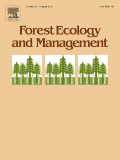
FOREST ECOLOGY AND MANAGEMENT
Elevating Knowledge in Forest EcosystemsFOREST ECOLOGY AND MANAGEMENT is a premier peer-reviewed journal dedicated to the integral study of forest ecosystems and their management, published by Elsevier in the Netherlands. With an impactful presence in the field, this journal boasts a prestigious Q1 ranking in multiple categories, including Forestry, Management, Monitoring, Policy and Law, and Nature and Landscape Conservation as of 2023. It addresses key issues relevant to sustainable forest practices, conservation strategies, and environmental monitoring, making it a vital resource for researchers, practitioners, and policymakers alike. The journal is indexed with an impressive Scopus rank, placing it among the top tier of titles in Agricultural and Biological Sciences and Environmental Science. While it does not offer Open Access options, its rigorous review process and high visibility make it essential for those seeking to stay abreast of the latest findings and trends in forest ecology and management. Published continuously since 1976, FOREST ECOLOGY AND MANAGEMENT aims to foster interdisciplinary collaboration and advance knowledge critical to the stewardship of forest resources in an ever-changing global landscape.

JOURNAL OF CAVE AND KARST STUDIES
Advancing Research in Unique EcosystemsJOURNAL OF CAVE AND KARST STUDIES, published by the NATIONAL SPELEOLOGICAL SOCIETY, stands as a leading academic platform dedicated to advancing knowledge in the field of cave and karst studies. Since its inception in 1996, this journal has consistently provided high-quality research articles that explore the geological, biological, and hydrological processes associated with these unique environments. With an impact factor that situates it in the Q3 category of Earth-Surface Processes, indexed by Scopus, it ranks 97th out of 179 journals in this domain, reflecting its contribution to the field. Although open access is not currently offered, the journal's rigorous peer-review process ensures scholarly integrity and quality. Researchers, professionals, and students around the globe are encouraged to engage with the journal for the latest insights and breakthroughs, fostering a greater understanding of cave and karst ecosystems. For more information, please refer to their address in Huntsville, AL, or visit their official website for submissions and guidelines.
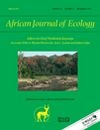
AFRICAN JOURNAL OF ECOLOGY
Championing Groundbreaking Research in African EcologyThe African Journal of Ecology, published by Wiley, is a leading academic journal in the field of Ecology, Evolution, Behavior, and Systematics. Established in 1963 and continuing its vital contributions to the field until 2024, this journal serves as a premier platform for researchers and scholars to share groundbreaking studies that explore the intricate relationships within ecosystems, particularly in the African context. With an impressive Scopus Rank of #423 out of 721 and a Q3 Quartile ranking, it stands as a credible source of scholarly information, gaining recognition among peers for its rigorous peer-review process and impactful publications. While the journal is not open access, it remains influential in driving advancements in ecological research and providing insights vital for conservation efforts and biodiversity studies. Authors and readers alike will find that the African Journal of Ecology not only promotes scientific inquiry but also fosters a deeper understanding of ecological dynamics that affect our world.

Fundamental and Applied Limnology
Advancing Aquatic Science: Insights into Freshwater EcosystemsFundamental and Applied Limnology is an esteemed academic journal dedicated to the exploration of freshwater ecosystems, bridging the gap between fundamental research and practical applications. Published by E Schweizerbart'sche Verlagsbuchhandlung in Germany, this journal has been a vital resource in the fields of aquatic science and ecology since its inception in 2007. With its ISSN 1863-9135 and E-ISSN 1863-9135, it provides a platform for researchers to disseminate significant findings related to limnology, contributing to a rich understanding of freshwater biodiversity, water quality, and ecological interactions. Although currently rated in the Q3 quartile for aquatic sciences and ecology as per the 2023 rankings, it remains a valuable outlet for interdisciplinary research and practical insights, facilitating critical advancements in environmental management. Open access options enhance its visibility and accessibility, making it indispensable for researchers, professionals, and students alike who are committed to advancing the scholarship in freshwater studies. Engaging with this journal not only opens doors to the latest research findings but also fosters collaboration and innovation in the ecological community.
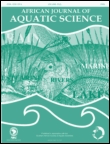
AFRICAN JOURNAL OF AQUATIC SCIENCE
Exploring the depths of biodiversity and conservation.AFRICAN JOURNAL OF AQUATIC SCIENCE, published by TAYLOR & FRANCIS LTD, is a premier scholarly journal dedicated to the field of aquatic science, ecology, and environmental management, playing a crucial role in advancing research and knowledge in these vital areas. With an impressive Q2 ranking in both Aquatic Science and Ecology, Evolution, Behavior and Systematics, the journal seeks to publish high-quality research encompassing a wide range of topics related to freshwater and marine ecosystems, including biodiversity, conservation strategies, and the impacts of climate change. Featuring a rich history of publication from 2000 to 2024, the journal not only embraces rigorous peer review but also aims to foster collaboration and dialogue among researchers, practitioners, and students interested in aquatic environments. Readers will find that the journal’s commitment to impactful scientific communication is reflected in its notable rankings within the Scopus database, making it an essential resource for those engaged in aquatic research and management.

WETLANDS ECOLOGY AND MANAGEMENT
Advancing knowledge in wetland conservation.Wetlands Ecology and Management, published by Springer, is an esteemed journal that has been advancing the field of wetland studies since its inception in 1982. Operating under the ISSN 0923-4861 and E-ISSN 1572-9834, this journal is headquartered in the Netherlands and serves as a critical resource for researchers, professionals, and students alike. It fosters interdisciplinary dialogue among aquatic science, ecology, and resource management disciplines, ranking in the Q2 category for Aquatic Science and Ecology, Evolution, Behavior and Systematics as of 2023. With a notable Scopus ranking, it is positioned favorably within the 65th percentile in Ecology and a commendable 58th percentile in Aquatic Sciences. The journal emphasizes the importance of effective management strategies and policies in the conservation of wetlands, making it indispensable for those aiming to drive impactful research. Although it is not an open-access journal, its high-quality publications remain accessible through library consortia and institutional subscriptions, ensuring that pertinent insights into the ecological dynamics and sustainable management practices are available to the global research community.

Neotropical Biodiversity
Fostering collaboration for ecological resilience in the Neotropics.Neotropical Biodiversity is a prominent journal dedicated to advancing our understanding of biodiversity and ecological dynamics within the Neotropical region. Published by TAYLOR & FRANCIS LTD in the United Kingdom, this Open Access journal has been providing unrestricted access to research findings since 2015, fostering collaboration and knowledge sharing among the global scientific community. With an emphasis on innovative research in Ecology, Ecology, Evolution, Behavior and Systematics, and Global and Planetary Change, it has earned a reputation for excellence, currently holding a Q3 category in its field. As of 2023, the journal ranks in the 37th percentile for Environmental Science (Ecology) and in the 36th percentile for Agricultural and Biological Sciences (Ecology, Evolution, Behavior and Systematics), making it a valuable resource for researchers, professionals, and students interested in understanding and preserving biodiversity in one of the world's most diverse ecosystems. We invite you to explore the cutting-edge research published in Neotropical Biodiversity and contribute to the ongoing dialogue for environmental sustainability and ecological resilience.

BOREAL ENVIRONMENT RESEARCH
Uncovering Insights into Boreal Environmental ChangesBOREAL ENVIRONMENT RESEARCH is a noteworthy academic journal published by the Finnish Environment Institute. Focusing on interdisciplinary studies within the realms of Agricultural and Biological Sciences, Atmospheric Science, Ecological Modeling, and Pollution, the journal aims to foster research that contributes to an improved understanding of boreal ecosystems and their interactions with global environmental changes. With an H-Index indicating a significant impact in the field and a convergence period extending from 1996 to 2024, BOREAL ENVIRONMENT RESEARCH serves as a platform for researchers, professionals, and students alike, promoting high-quality, peer-reviewed articles that address pressing environmental issues. Although it operates on a subscription basis, the journal's robust categorization within Q3 and Q4 quartiles highlights its relevance and commitment to facilitating academic dialogue and collaboration. Located in Helsinki, Finland, this journal stands as a vital resource for those dedicated to understanding and addressing the complex challenges faced by boreal environments.

ECOLOGICAL RESEARCH
Fostering innovation in ecology for a sustainable future.ECOLOGICAL RESEARCH is a prestigious academic journal published by WILEY, dedicated to advancing the field of ecology and its associated disciplines. Since its inception in 1986, the journal has consistently provided a platform for high-quality, peer-reviewed research, contributing significantly to the understanding of ecological systems and their complexities. With an impressive 2023 impact factor reflected in its Q1 ranking in the category of Ecology, Evolution, Behavior, and Systematics, it stands among the top journals in its field, as evidenced by its Scopus rank of #192 out of 721 and placement in the 73rd percentile. While accessible through standard subscription models, this journal plays an essential role in disseminating crucial findings and innovative methodologies to researchers, professionals, and students alike. With a commitment to fostering ecological knowledge and collaboration, ECOLOGICAL RESEARCH continues to influence ecological practices and policies, shaping the future of research in this critical area.
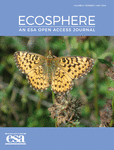
Ecosphere
Advancing ecological understanding for a sustainable future.Ecosphere is a leading open-access journal published by WILEY, dedicated to advancing research in the fields of ecology, evolution, behavior, and systematics. Established in 2010 and headquartered in the United States, this innovative journal provides a platform for the exchange of cutting-edge scientific knowledge and discovery, fulfilling its mission to enhance our understanding of ecological systems and their interactions. With a prestigious impact factor reflecting its commitment to high-quality research, Ecosphere is ranked Q1 in both Ecology and Ecology, Evolution, Behavior, and Systematics for 2023, further solidifying its prominence in the scientific community. The journal's scope includes a wide array of topics related to environmental science, making it an essential resource for researchers, professionals, and students aiming to stay at the forefront of ecological research. It offers comprehensive open access options, ensuring that groundbreaking findings are readily available to a global audience, thus fostering collaboration and innovation in the field.